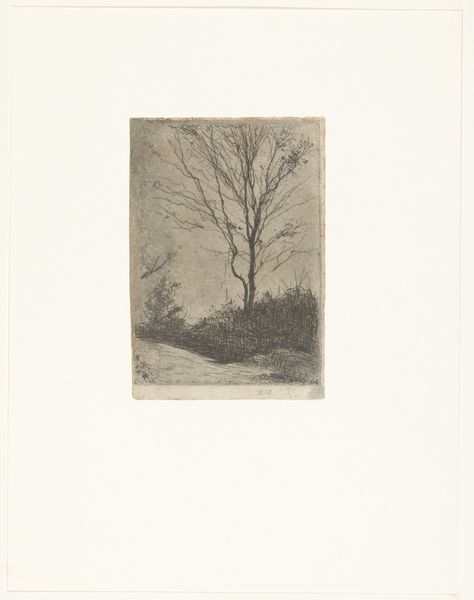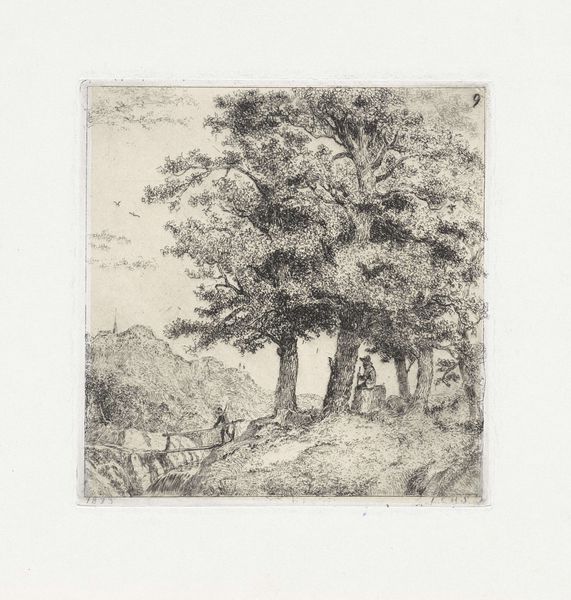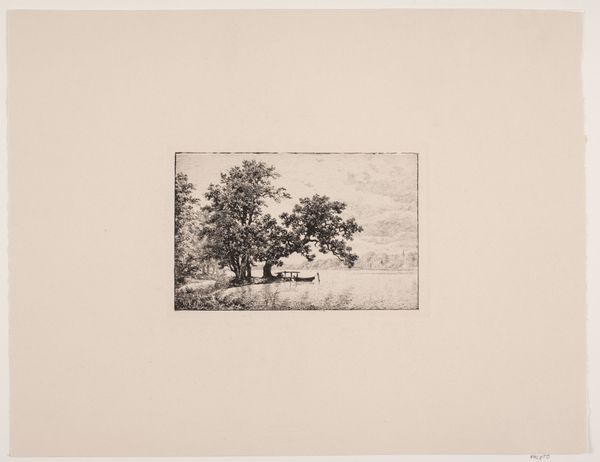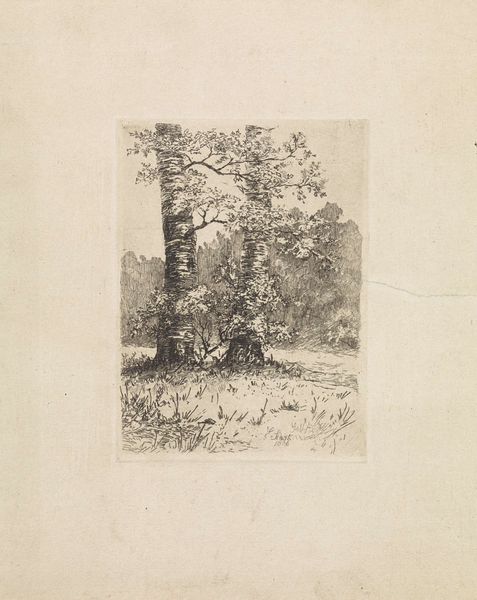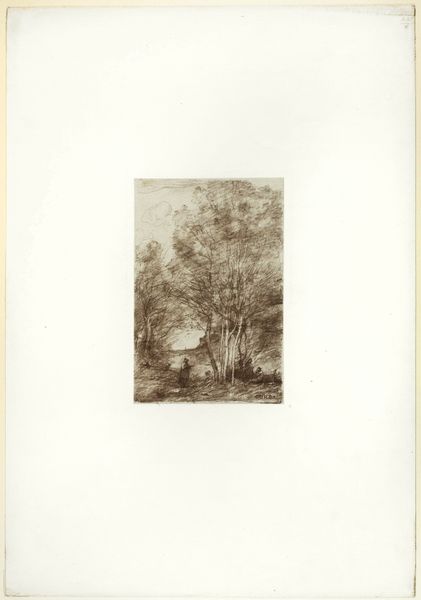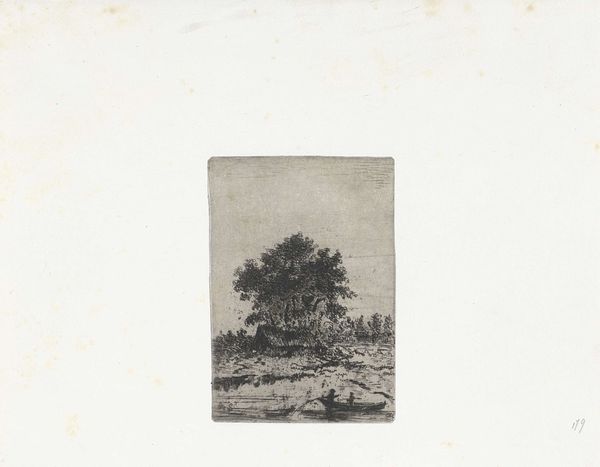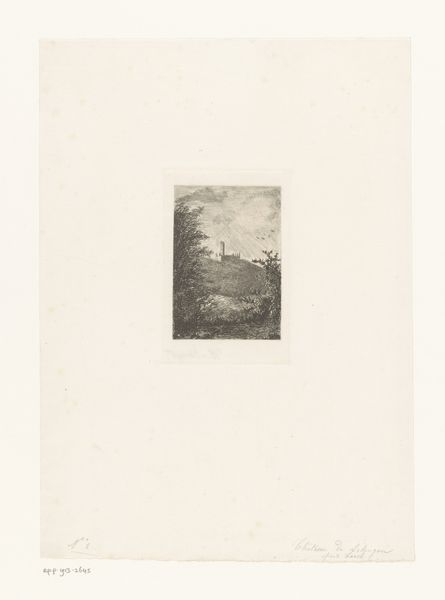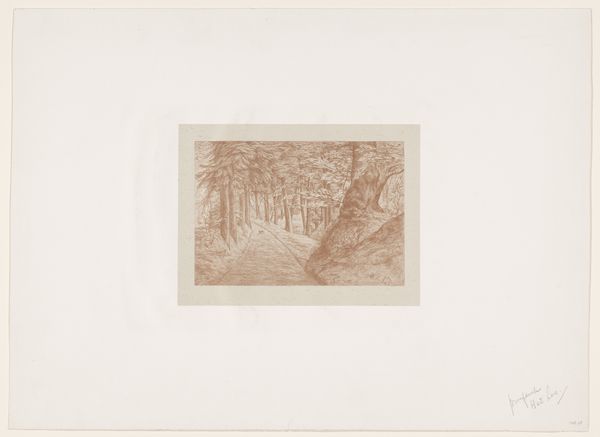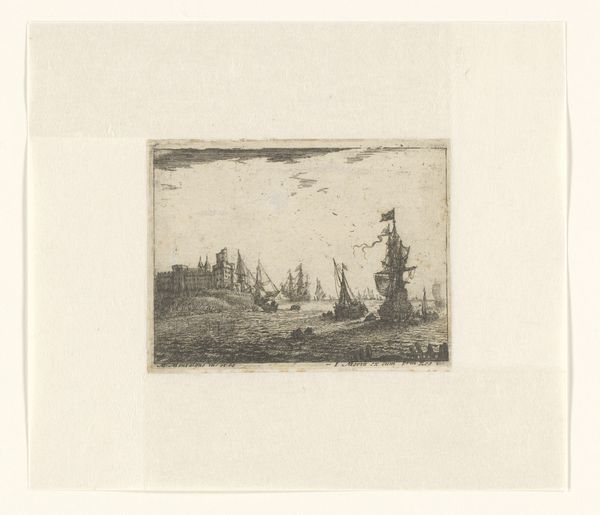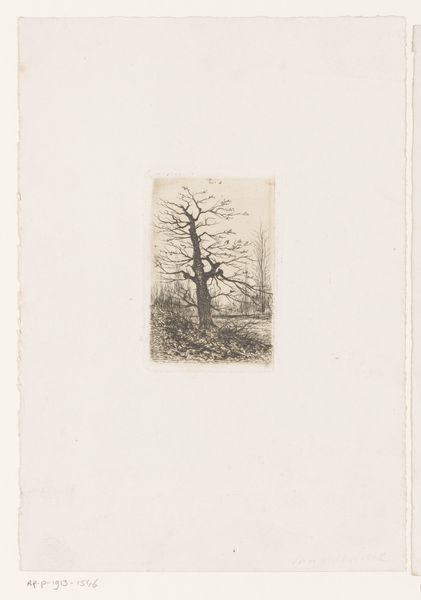
drawing, paper, ink, pencil
#
tree
#
drawing
#
light pencil work
#
landscape
#
paper
#
ink
#
pencil
#
line
#
northern-renaissance
#
tonal art
#
realism
Dimensions: height 148 mm, width 198 mm
Copyright: Rijks Museum: Open Domain
Curator: Let’s turn our attention to Paulus Willemsz. van Vianen's "Studie van een boom," or "Study of a Tree," created around 1603. It’s an ink, pencil, and paper drawing currently housed here at the Rijksmuseum. What strikes you first about this delicate landscape, Editor? Editor: Immediately, there's an understated grandeur, wouldn't you agree? The solitary tree feels monumental despite the intimate scale of the drawing. And yet, there's a stillness, a quiet dignity in its isolated presentation against the muted background. It evokes contemplation. Curator: Indeed, there's an intentionality here. Remember that this period, the early 17th century, saw immense transformations in Dutch society with the rise of mercantile power and religious conflicts. Do you feel the tree, then, speaks to those struggles for stability in a quickly changing society? A kind of rootedness that maybe people yearned for? Editor: That’s a very interesting angle. I'm also drawn to how the tree can symbolize the 'tree of life'— an ancient, potent emblem spanning various cultures representing immortality and interconnectedness. Consider how it connects the earthly and spiritual realms, offering shelter and bearing fruit. What social narrative does that mirror from that time? Curator: Precisely. Given the context, it could even be interpreted as a subtle comment on religious freedom, then at the forefront of sociopolitical strife: this tree persists regardless of what political storms may brew around it. What appears as a humble landscape, as a simple "study", invites viewers into profound historical and cultural territories, doesn't it? Editor: It does. The symbolism definitely permeates, beyond just nature studies; it serves as a repository of communal ideals and unspoken, culturally formative principles about life and death cycles of nature mirrored against life. Curator: Absolutely. Considering these visual echoes resonating through time offers such profound insights when examining earlier works. It transforms our viewing experience into more of a living dialogue. Editor: And those dialogues continue, re-shaping how we perceive these enduring symbols even today, no?
Comments
No comments
Be the first to comment and join the conversation on the ultimate creative platform.


